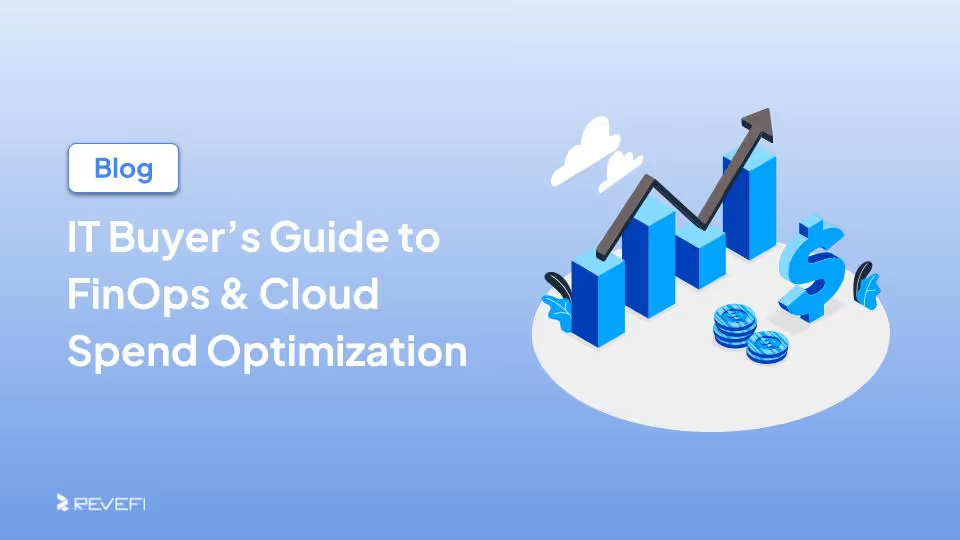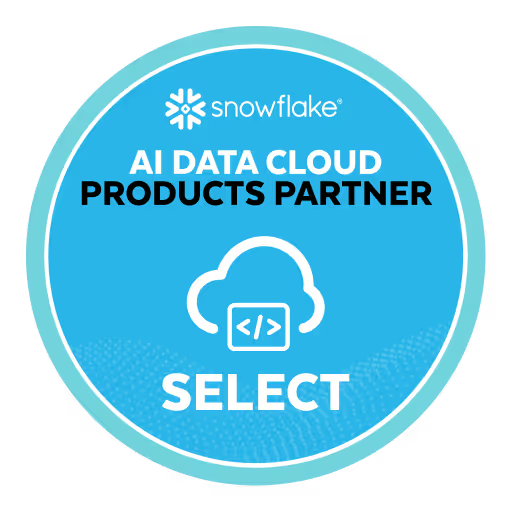If you're reading this, chances are your cloud data costs are growing fast, and you’re struggling to keep them in check.
You’ve likely tried manual tracking, internal dashboards, or spreadsheets. But without real-time insights or automation, it’s hard to control spending, assign ownership, or catch problems early.
This guide is for IT leaders managing data platforms and tools like Snowflake, BigQuery, Redshift, or Databricks. You'll learn what to look for in a FinOps platform, how to reduce manual effort, and how to bring better visibility and control to your cloud spend.
The Shift to Cloud & Why Cost Control Is Critical
The move from traditional on-prem databases to cloud-native architectures has enabled scalability and speed like never before. But it has also led to:
- Increased spend unpredictability due to on-demand usage
- Overprovisioning and idle resources hidden across environments
- Difficulty in forecasting and chargebacks
- Tracking performance
For IT teams, it's not just about enabling scale; it’s about ensuring the ROI of that scale. ROI is measured not just in performance but also in how efficiently the infrastructure is being used.
Reports show that, on average, companies waste 32% of their cloud budget. In some cases, that number climbs as high as 47%.
That’s why FinOps is no longer just a finance function. It’s a key part of IT strategy and execution.
ROI on Cloud Infrastructure Setup
Organizations invest in cloud infrastructure for speed, scalability, and innovation. But realizing a return on that investment means more than just uptime; it means efficiency. Unmonitored workloads, unused data pipelines, and idle computing can eat away at budgets.
The ROI of cloud infra comes from:
- Maximizing resource utilization
- Scaling efficiently across teams
- Preventing overages before they happen
Without FinOps, you’re flying blind. You can’t improve what you can’t measure, and measurement alone doesn’t drive action. That’s where automation, governance, and accountability become essential.
What is FinOps?
FinOps, or Cloud Financial Operations, is a collaborative discipline that brings IT, engineering, and finance together to manage cloud costs effectively.
It’s not just a cost-saving exercise. FinOps is about:
- Creating visibility into cloud usage and costs
- Encouraging shared responsibility for spending
- Driving data-driven decisions across teams
At its core, FinOps enables teams to balance innovation with financial accountability. Engineers maintain agility, finance gets predictability, and IT leaders ensure overall efficiency.
How FinOps Aligns IT, Finance, and Engineering
FinOps establishes a culture of ownership around cloud costs. Here’s how it brings stakeholders together:
- Engineering gets real-time feedback on usage and can optimize workloads proactively.
- Finance receives better forecasting data, helping align cloud costs with budgets.
- IT ensures governance and oversight, avoiding sprawl and inefficiencies.
This triad alignment turns cloud spending into a controllable, predictable, and strategic lever for the business.
Key Cloud Spend Challenges Facing IT Buyers
- Unpredictability of Usage-Based Pricing
Cloud platforms like Snowflake, BigQuery, Redshift, and Databricks operate on a usage-based pricing model. While this offers flexibility, it also creates volatility. Usage can spike due to ad hoc analytics, an increase in concurrent users, or even a poorly written SQL query. Without proper controls, this leads to unexpected cost surges, often discovered only after billing.
- Delayed or Incomplete Cost Visibility
Most cost-tracking tools are reactive. They rely on batch processing and provide insights days or even weeks after the usage occurs. By the time an anomaly is detected, the budget impact has already been felt. IT teams need near real-time visibility into cloud usage to make timely decisions, prevent overruns, and stay within financial guardrails.
- Hidden Infrastructure Waste
In many environments, non-critical resources are left running after use, such as orphaned tables, idle compute clusters or outdated development environments. These quietly consume the budget in the background. Without automated tools to identify and remediate such waste, it accumulates over time and leads to ballooning cloud bills.
- Multi-Cloud and Cross-Platform Complexity
Organizations increasingly adopt a hybrid or multi-cloud setup, combining Snowflake for analytics, Databricks for machine learning, Redshift for warehousing, and more. But monitoring costs and performance across these platforms isn't straightforward. Each has its own billing model, metrics, and usage granularity. Without a unified view, optimization becomes siloed, and teams struggle to make informed decisions.
How to Select the Right Approach to FinOps
Not all FinOps tools are created equal. Here’s a more detailed framework to evaluate platforms effectively:
- Real-Time Spend Monitoring
Opt for a solution that provides continuous monitoring with usage broken down by team, workload, warehouse, and even query level. Look for tools that offer cost trendlines, spike alerts, and heatmaps that make it easy to pinpoint where inefficiencies lie.
- Intelligent Automation
Monitoring alone isn’t enough. A strong FinOps platform should help you act automatically. Key capabilities include:
- Anomaly detection that flags unexpected usage
- Auto-suspension of idle clusters or underutilized warehouses
- Dynamic scaling based on performance and cost thresholds
This reduces manual oversight, offloads repetitive tasks from engineers, and ensures 24/7 control over spending.
- Native Support for Cloud Data Platforms
Your tool should natively support the platforms you rely on, whether that’s Snowflake, Redshift, BigQuery, or Databricks. Avoid tools that rely on third-party connectors or custom scripts to collect data, as these often lag or break with platform updates.
- Built-In Governance
Governance is about assigning accountability. Choose tools that allow tagging by department, team, or project and support policies that alert teams when budgets are nearing limits. The goal is to give every stakeholder, from engineering to finance, a clear view of their financial footprint.
- Actionable Reporting
Reporting should go beyond surface-level summaries. Look for:
- Cost attribution tied to specific jobs or users
- Forecasting models based on historical trends
- Recommendations that explain why a resource is underutilized and how to fix it
These kinds of insights help teams not just understand costs, but reduce them intelligently.
- Fast Time to Value
Implementation shouldn’t take months. Evaluate how long it takes to get up and running. A good FinOps tool should:
- Integrate easily with your existing CDW stack
- Require minimal engineering effort
- Start delivering cost insights within days, not weeks
- Build vs Buy: Know When to Partner
Some teams consider building their own FinOps dashboards. While this gives control, it also introduces long-term complexity:
- DIY tools need ongoing support and engineering time
- They typically offer limited automation or anomaly detection
- Scaling them across platforms and teams is slow and error-prone
By partnering with a purpose-built FinOps platform, you get access to proven automation, quicker deployment, and insights backed by best practices, saving months of trial and error.
How Revefi Empowers IT Teams in FinOps Adoption
Revefi’s AI-powered Agent for Cloud Data Spend Optimization is explicitly designed for modern FinOps challenges, combining automation, deep visibility, and actionable insights to reduce cloud costs and lighten engineering workloads.
Here are some key features:
- Real-Time Cost Intelligence: Gain instant visibility into cloud spend broken down by project, team, or workload. This insight helps identify costly jobs and resource waste early, contributing to 50–60% cost savings within months by eliminating inefficiencies such as idle clusters and poorly optimized queries.
- Autonomous Monitoring: Revefi continuously monitors your cloud data warehouses and flags anomalies, like unexpected cost spikes or underutilized resources, reducing manual monitoring efforts by up to 99%.
- Cross-Platform Compatibility: Manage Snowflake, BigQuery, Redshift, and Databricks from a single pane of glass, enabling unified governance and comprehensive cost oversight.
- Seamless Integrations: Revefi integrates with essential tools like dbt, Terraform, JIRA, Datadog, and your CI/CD pipelines, ensuring FinOps practices fit smoothly into your existing workflows.
- Automated Governance: Assign cost ownership, set policies, and define guardrails automatically to build accountability across teams without adding manual overhead.
- Fast Implementation: Deploy quickly with minimal setup, allowing teams to see actionable insights and measurable savings within weeks rather than months.
Organizations using Revefi report faster resolution of usage anomalies, improved budgeting accuracy.
The Future is FinOps + AI-powered Automation
As cloud costs continue to rise, IT teams can no longer rely on manual tracking and guesswork.
FinOps provides the cultural framework, but automation is the engine that drives real savings and smarter decisions.
Revefi’s AI Agent for Cloud Data Spend Optimization empowers IT leaders to gain real-time insights, reduce waste, and align teams across engineering and finance. Through intelligent automation, real-time monitoring, and actionable insights, Revefi’s AI Agent continuously analyzes usage patterns, query behavior, and data usage.
Revefi identifies inefficiencies like idle resources, over-provisioned compute, and unnecessary data storage. Unlike traditional cost dashboards, Revefi operates at the metadata level, offering deep visibility into how every data asset contributes to cost. This enables FinOps, engineering, and data teams to align performance with budget goals, maximizing ROI without compromising speed, scale, or reliability.
In the race to optimize cloud spend, combining human expertise with AI-powered automation is now a necessity.
Schedule a demo with Revefi, and see how Revefi can elevate your FinOps practice.











